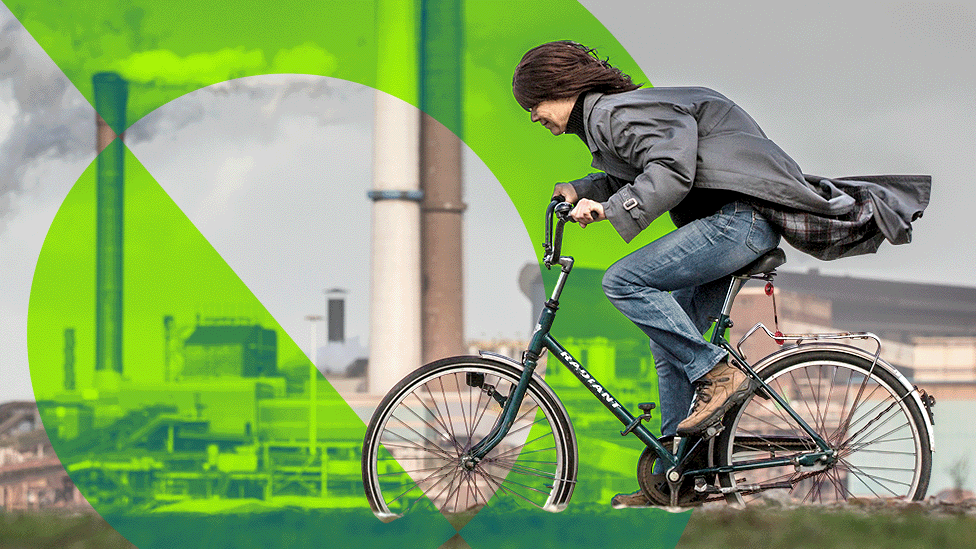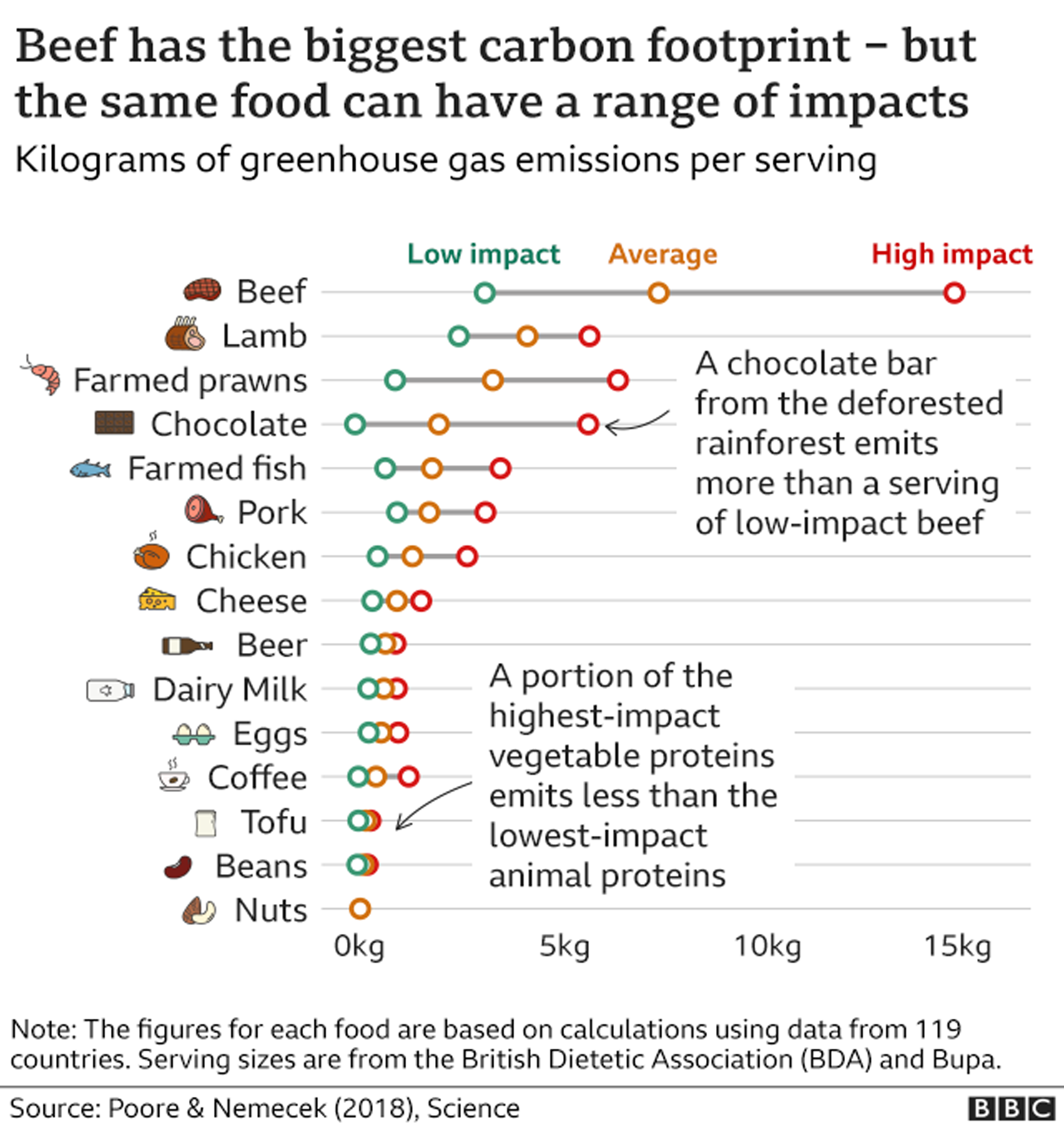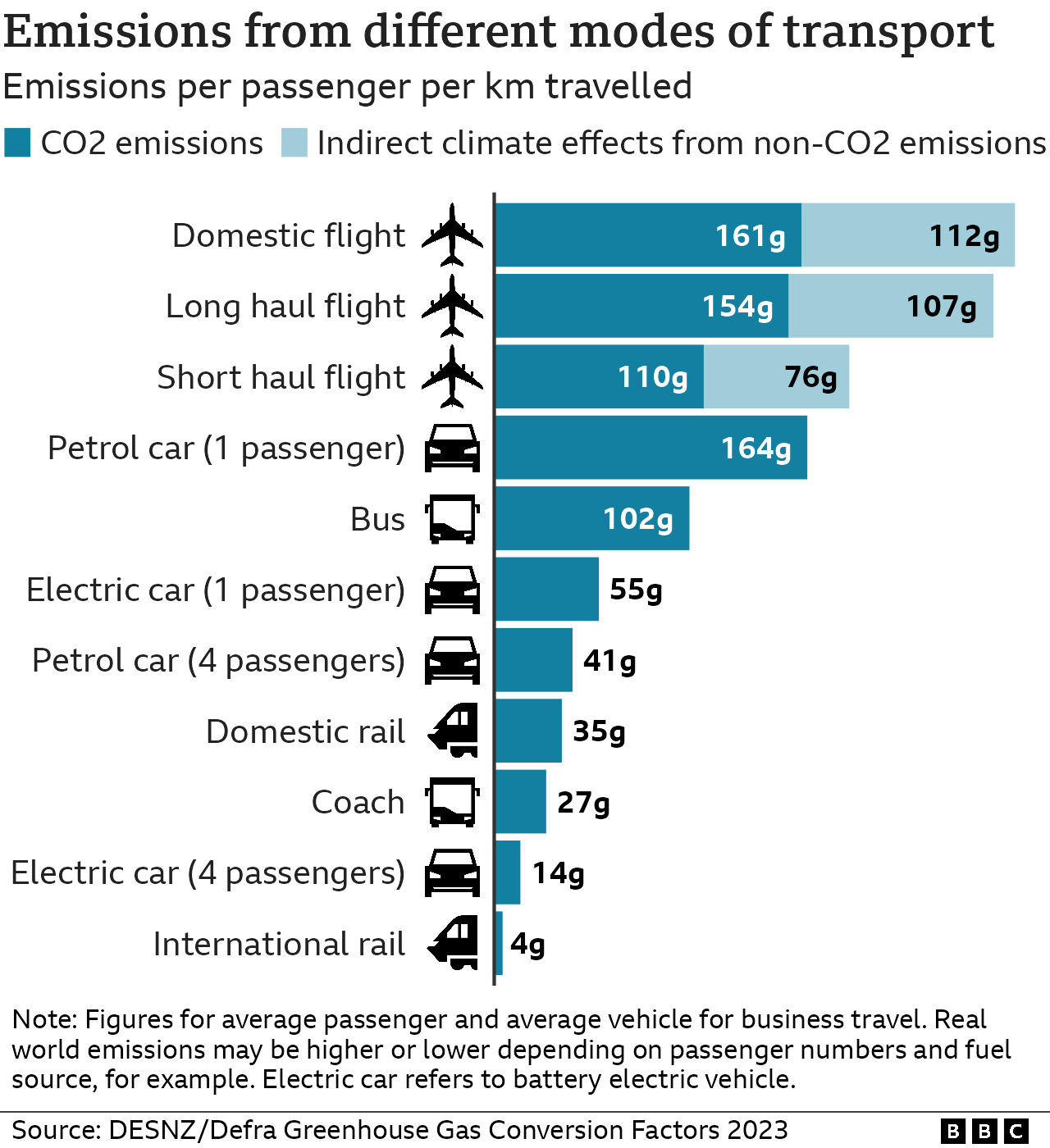Climate change: Four things you can do about your carbon footprint
- Published

Tackling climate change will require world leaders to take action on a global level.
But as individuals we also contribute to planet-warming emissions. Here are some things you can do to reduce your personal impact.
1. Changes to your home
From installing a heat pump to turning down the heating, there are lots of changes you can make around the home that can help the planet.
"Switching from a gas or oil-powered heating system to an electric heat pump makes a considerable difference," according to Dr Neil Jennings of Imperial College London.
"On a day-to-day basis, switching off lights and appliances when not in use can help us to save money while reducing our impact on climate change."
The UK government currently offers grants of £7,500 for the installation of heat pumps in England and Wales, external. The Boiler Upgrade Scheme runs until 2028.
Improving insulation in our walls, ceilings and windows can reduce the loss of heat from our homes.
This means less energy is needed to heat them to the same temperature - reducing greenhouse gas emissions and saving money.
Draught-proofing is one of the cheapest and most effective forms of insulation, according to the Energy Saving Trust (EST), external. This involves blocking up unwanted gaps that let cold air in and warm air out, such as around windows and doors.
2. Cut out food waste and cut down on red meat
Overall, the global food system contributes between a quarter and a third of all greenhouse gas emissions, external.
These figures include the meat and dairy industries, but also other food sources like crops.
But not all food sources are equally bad for the environment.
Red meat, such as beef and lamb, has a particularly high carbon footprint. So cutting consumption of red meat can help to reduce your climate impact.
But even the same food source can have a range of impacts, depending on how it is produced and where it comes from. As you can see from the chart below, for example, even chicken with a high climate impact tends to fare better than low impact beef.

As a result, it is not just a question of "tagging individual products as good or bad", says biologist Prof Margaret Gill of the University of Aberdeen.
Dr Jonathan Foley, who investigates climate change solutions, says you can save money and reduce waste , externalby making smaller portions and saving leftovers for later at home.
Around 25-30% of the food produced around the world is lost or wasted, according to the Waste & Resources Action Programme, external.
And global food loss and waste contributes around 8-10% of global greenhouse gas emissions, according to a UN report, external.
3. Drive less, fly less
Transport is responsible for roughly a quarter of all energy-related greenhouse gas emissions, external worldwide.
Living car-free might be "the most impactful thing we can do to reduce our transport emissions," according to Dr Jennings.
However, ditching the car is not possible for everyone, particularly if you live in an area without good public transport or are disabled.
Small actions can still have an impact, like walking and cycling to the local shops or sharing car journeys with friends or neighbours.
Switching to an electric car can also greatly reduce your carbon footprint.
Unlike petrol and diesel cars, fully electric cars do not produce carbon dioxide as they are driving along, although there are emissions from manufacturing the vehicle and generating electricity that powers it.
Over their lifetime, fully electric cars cut emissions by around two-thirds in Europe and the United States, external compared with petrol equivalents.
And as electricity gets cleaner, with wind and solar displacing fossil fuel power, electric cars will have an even bigger emissions advantage over petrol and diesel.
The cost of electric cars has been expensive historically, but prices have generally been coming down.
As a result, the number of electric cars is growing quickly, external in some parts of the world, particularly China and Europe.

Unfortunately for keen travellers, flying is one of the most carbon-intensive things we can do as individuals.
Domestic flights have the largest emissions per person per kilometre. Taking these journeys by train can reduce your climate impact.
"For those who fly a lot, reducing the number of flights you take will make a considerable difference to your personal footprint," says Dr Jennings.
4. Think before you buy
A single pair of some types of jeans can produce more than 30kg of carbon dioxide equivalent across their lifespan, taking into account cotton production, manufacture, transport and washing.
However, the carbon footprint of different types of clothing varies substantially from case to case - so what, and how much, you buy can make a difference.

Buying second-hand can reduce waste and save you money too
You can limit your impact by repairing minor faults in clothing rather than replacing them, donating rather than throwing away and choosing higher-quality items that you think will last longer.
An increasing number of companies are offering clothes to rent, which helps reduce waste in the fashion industry. You could also try buying second-hand.
Choosing the right household appliances can also have a positive effect on your carbon footprint. Dr Jennings suggests making sure you are buying the most energy-efficient products, such as washing machines, when they need replacing.